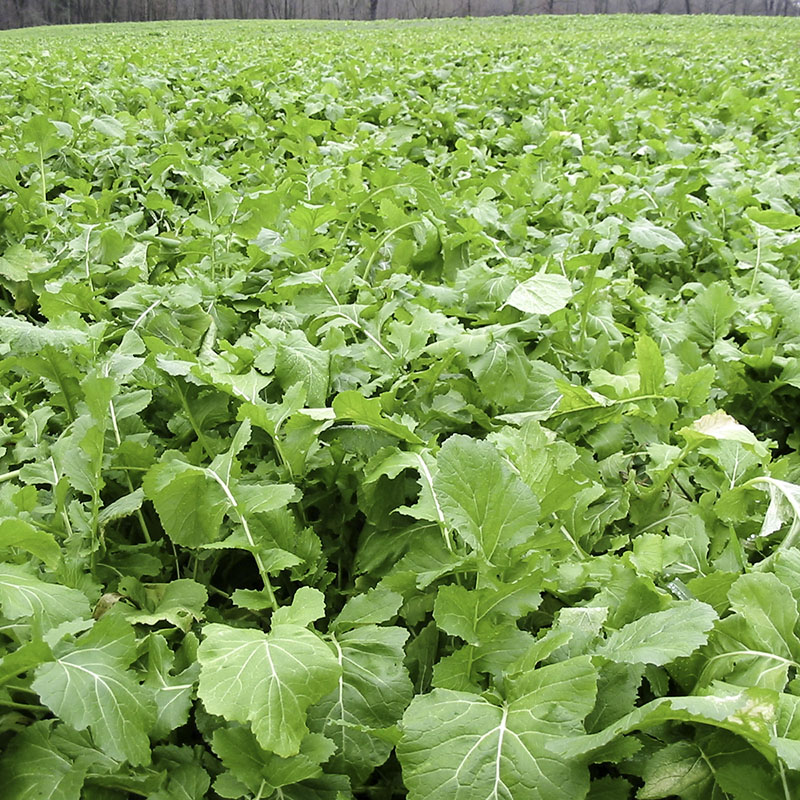Forage Brassicas are useful for extending the grazing season when other forages are less productive. Brassicas can provide higher crude protein and digestibility at half the cost of hay or conserved forages. Brassicas have extremely high yield potential when grown on high fertility soils and properly managed. Brassicas can produce as much as 40 tons (wet) per acre. Cold, drought and heat tolerant, these crops commonly provide valuable feed when other crops are less productive.
Suggested seeding rates: Seed 3-4 lbs/acre alone, 1-2 lbs/acre in a mixed stand.
Approx. seeds/lb.: 160,000 to 200,000
Seeding depth: Seed 1/8″ deep in a firm, moist seedbed.
Ave. Emergence time (days): 7
Preferred soils: T-Raptor requires good soil drainage and a pH between 5.3 and 7.
Establishment: Seed should be planted in a firm, moist seedbed. T-Raptor can be broadcasted or drilled with 6 to 8 inch rows at 3-4 lbs. per acre. It is very important not to plant the seed too deep; one-eighth of an inch will work best. To prevent disease and pest problems, brassicas should not be planted more than two consecutive years in the same location. T-Rapter responds well to fertilizer.
Management suggestions: T-Raptor can be sown in spring or late summer. T-Raptor is quick to establish, ready for first grazing 6-8 weeks after planting. Strip-grazing prevents both yield and quality losses due to tramping and polluting. It is also important not to overfeed the cattle when they are allowed to graze the turnips at first. Extreme high dry matter intake of brassicas can cause health problems. Stock should be allowed to adjust to the change of diet. Supplementing with other forages will also prevent these problems.






